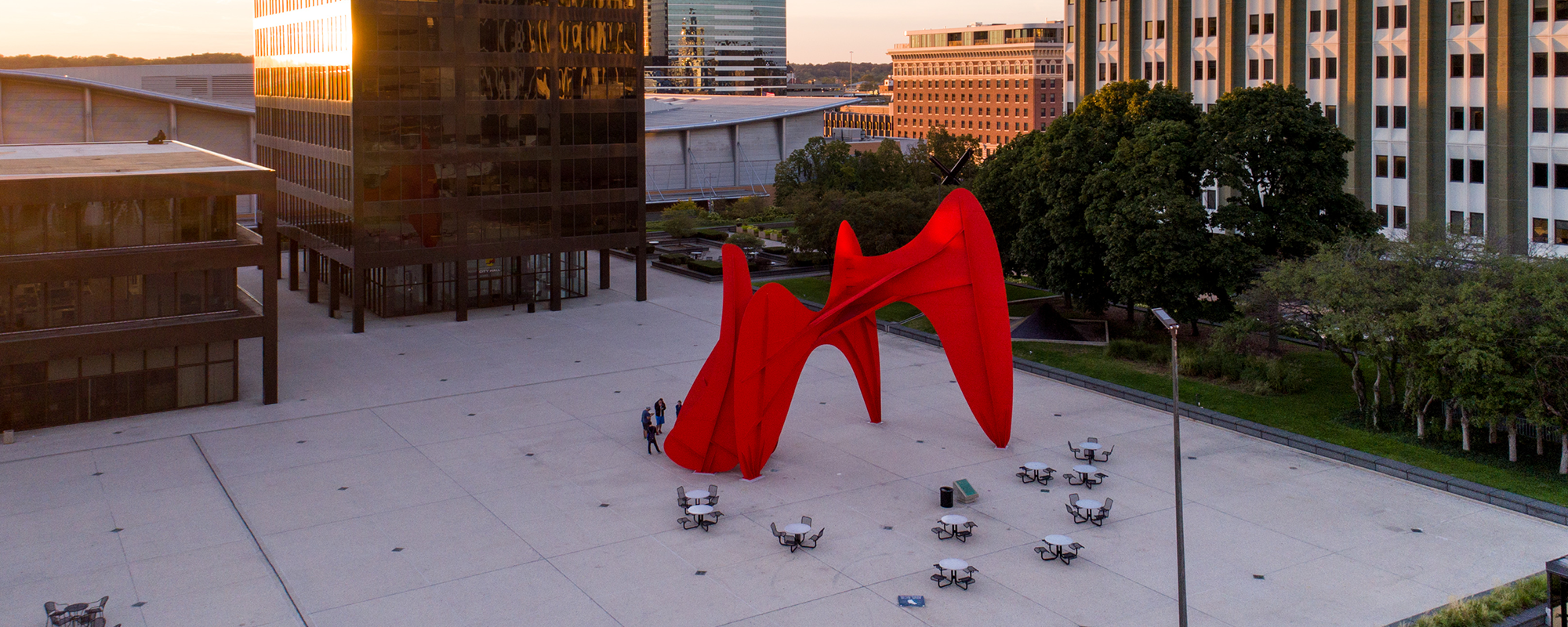As a student who is studying at Grand Valley State University and is from the East side of the state, I am not familiar with the Grand Rapids area. Thanks to our Executive Director Rachel Gray who took me along on a Grand Rapids walking tour, I have learned many facts about Grand Rapids, and I’m excited to tell you about them! On this tour, we talked about architecture, art history, and the significance of the river in Grand Rapids.
One popular piece of artwork we discussed is located on the plaza of city hall is called the “La Grande Vitesse” or “the great swiftness” translated from French. Which represents the flow of the Grand River. This piece is more commonly called “The Calder,” named after the artist, Alexander Calder. He is considered one of the most important American sculptors of the 20th Century. The Calder was the first public artwork funded by the National Endowment for the Arts. The symbolism of the Calder is found throughout Grand Rapids in street signs, food trucks, festivals, and even buildings. The DeVos Convention Center is a great example of the river’s symbolism because it is shaped like the river’s flow. You will also notice the Calder is on the Grand Rapids flag with the shape of the river. You can see the symbolism almost everywhere if you pay close attention!
Have you ever wondered why the grid road is located on the bottom left of the Grand Rapids map? The first founder of Grand Rapids was Louis Campau. He created this road for easy access to the river. The Native Americans utilized this river to their advantage for transportation and receiving supplies and food. In 1831, Lucius Lyon arrived in Grand Rapids and while plotting his village called “Kent”, it clashed with Campau’s road structures. So, he created the standard English grid format that followed the compass for direction instead of . The conflicting roads structures began to attract more settlers, and therefore the city began to grow.
One architectural fact that stood out to me on the tour is that the GVSU blue bridge was reconstructed in the late 1980s to match the school colors. Before the bridge was reconstructed, it was an abandoned and dangerous structure blocked off with chain link fences at both ends. It was built by the long-defunct Grand Rapids and Indiana Railroad that had been around since 1892. At the time, a Grand Valley State University executive wanted the bridge to remain the “Grand Valley Blue.” They were told that after sandblasting the bridge, the original bronze color will peak through. Shockingly, the color didn’t budge and remained blue. Now it is an identifier of Grand Valley State University’s downtown campus and the perfect place for events like ArtPrize and taking wedding/graduation pictures!
There are so many historical symbols in Grand Rapids that you may not know! Hopefully, this inspires you to go out and explore Grand Rapids! Take a tour of the Grand Rapids Public Museum to experience the lifestyle in the 1890s.

